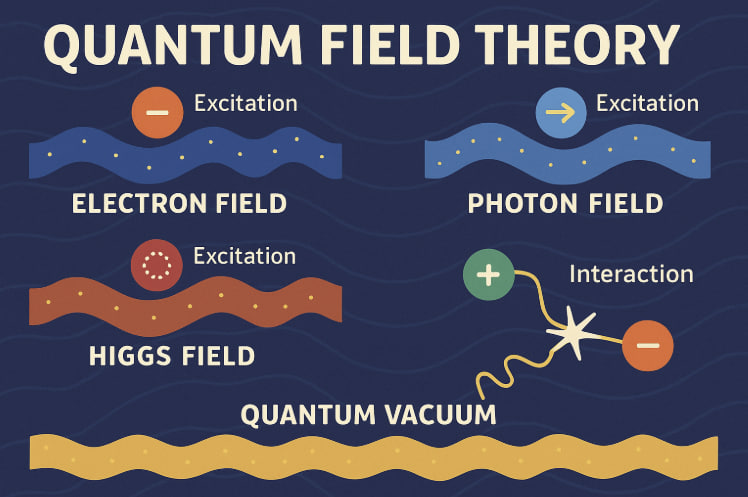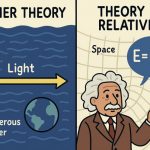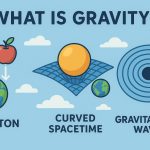Quantum Field Theory (QFT) is the foundational framework of modern physics, uniting quantum mechanics, special relativity, and field theory. It is the most successful and experimentally verified scientific theory to date, underlying our understanding of particles, forces, and the structure of spacetime itself.
While its mathematical depth can be daunting, the basic concepts of QFT offer profound insight into the nature of reality.
What Is a Quantum Field?
In classical physics, particles like electrons or photons are considered small, localized objects. But in QFT, every type of particle is actually a quantized excitation of an invisible, underlying field that spans all of space.
- Electron field: A ripple in this field is what we call an electron.
- Photon field: A disturbance in this field produces a photon (a particle of light).
- Higgs field: This gives particles mass when they interact with it.
These fields are always present, even in a vacuum. What we perceive as “empty space” is actually a seething ocean of quantum fluctuations.
Particles as Excitations
Instead of picturing particles as tiny balls, QFT describes them as energy packets or quanta that arise from vibrating fields.
- An interaction happens when one field’s excitation influences another (e.g., when an electron emits or absorbs a photon).
- The strength and type of interaction depend on the field and its properties.
- All known forces (except gravity) are explained by interactions between quantum fields.
This elegant model forms the Standard Model of particle physics, which describes all known particles and forces except gravity.
Virtual Particles and the Quantum Vacuum
QFT also explains bizarre quantum phenomena:
- Virtual particles: Temporary fluctuations that pop in and out of existence. Though undetectable directly, they mediate forces and affect measurable quantities.
- Vacuum energy: Even in perfect vacuum, energy remains due to constant field fluctuations. This may play a role in dark energy and the expansion of the universe.
- Casimir effect: A measurable force caused by vacuum fluctuations between two metal plates—real-world proof of QFT’s predictions.
These concepts would be impossible to explain using classical or even non-relativistic quantum theory.
Quantum Field Theory and Reality
QFT is just theory – such things as gravity it can’t cover at the moment – but it makes testable predictions confirmed like:
- The magnetic moment of the electron agrees with QFT predictions to over 10 decimal places.
- Particle colliders (like CERN’s LHC) use QFT to predict outcomes of high-energy collisions.
- It explains atomic decay, quantum tunneling, superconductivity, and antimatter.
Glossary
- Quantum field — A physical field present throughout space, whose excitations are particles.
- Excitation — A disturbance or ripple in a field, perceived as a particle.
- Standard Model — The quantum field theory that describes all known particles and interactions (except gravity).
- Virtual particle — A short-lived particle involved in force mediation or fluctuations.
- Vacuum fluctuation — Temporary change in energy due to quantum uncertainty in empty space.


